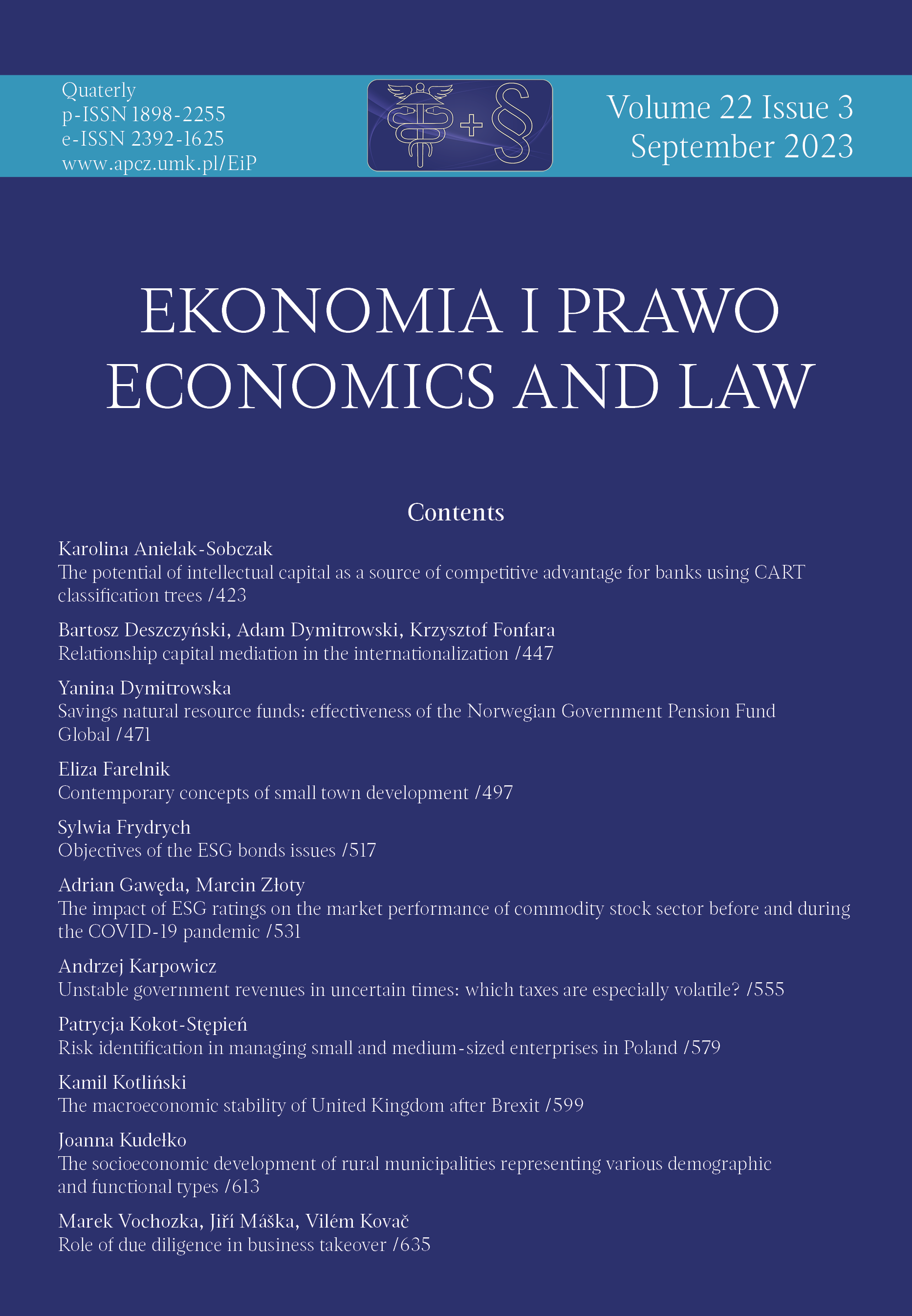Role of due diligence in business
takeover
Role of due diligence in business
takeover
Author(s): Marek Vochozka, JIŘÍ MÁŠKA, VILÉM KOVAČSubject(s): Business Economy / Management, Commercial Law
Published by: Wydawnictwo Naukowe Uniwersytetu Mikołaja Kopernika
Keywords: due diligence; in-debt literature review; Ishikawa fishbone diagram; business takeover; business valuation;
Summary/Abstract: Motivation: The topic of the article is of paramount importance in today’s ever-evolving business landscape. As companies strive to expand their operations and stay ahead of the competition, mergers and acquisitions have become a popular strategy. However, the risks and complexities associated with these transactions cannot be overlooked. Understanding the role of due diligence is essential for any organization considering a business takeover. It serves as a powerful tool to uncover potential risks, assess the viability of the transaction, and make well-informed decisions. By conducting a thorough due diligence process, companies can identify financial discrepancies, legal liabilities, operational inefficiencies, and hidden risks that may impact the success of the transaction. Aim: The goal of the research was to analyze to what extent the resulting value of a business is affected by improperly performed due diligence. The method used for data collection was in-depth literature research based on the Web of Science database. Subsequent content analysis was used to identify the 10 most common errors that can occur during the process of due diligence. The following research used the data obtained from answering the first research question with an Ishikawa fishbone diagram used as a specific method of causal analysis. Results: The main findings include the identification of the most common errors occurring during the performance of due diligence, such as wrong financial analysis, incomplete financial accounts, incomplete accounting statements, or adjusting entries for receivables. The main causes include excessive work pressure on auditors, past-due receivables, poor supplier vetting, or failure to document the application of prices. The research is beneficial for auditors or audited companies so that they could avoid such errors. However, there are also several limitations, as it is very time and cost-consuming to deal with due diligence on a company-by-company basis. Also, the application of the Ishikawa fishbone diagram and brainstorming prior to diagram depends on the number of experts involved. Another limitation is that the research results applied under current accounting legislation only, and there are different laws and regulations in different countries.
Journal: Ekonomia i Prawo. Economics and Law
- Issue Year: 22/2023
- Issue No: 3
- Page Range: 635-654
- Page Count: 20
- Language: English

